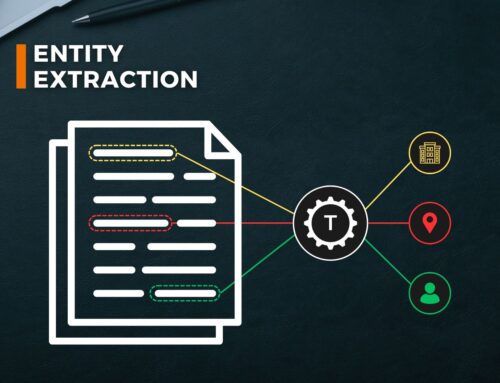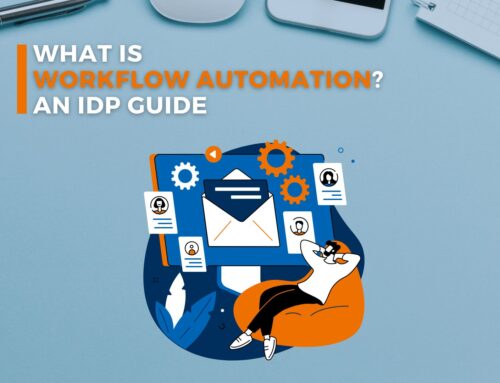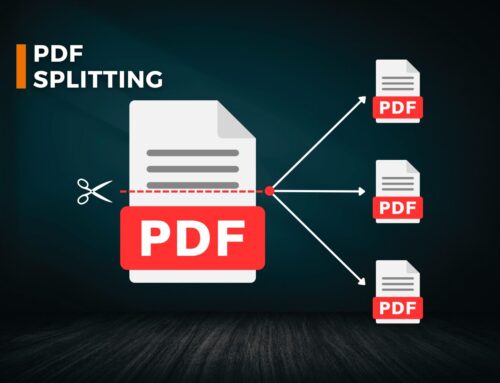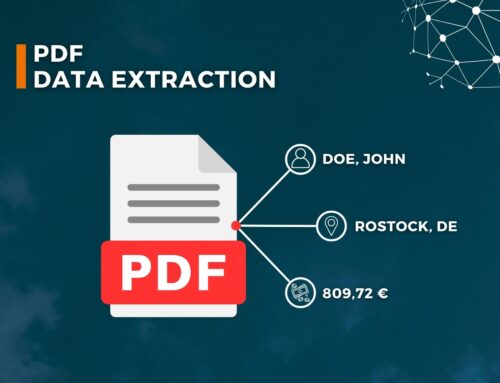Demystifying IDP: 52 Definitions in the Context of Intelligent Document Processing 2/4 – Technology
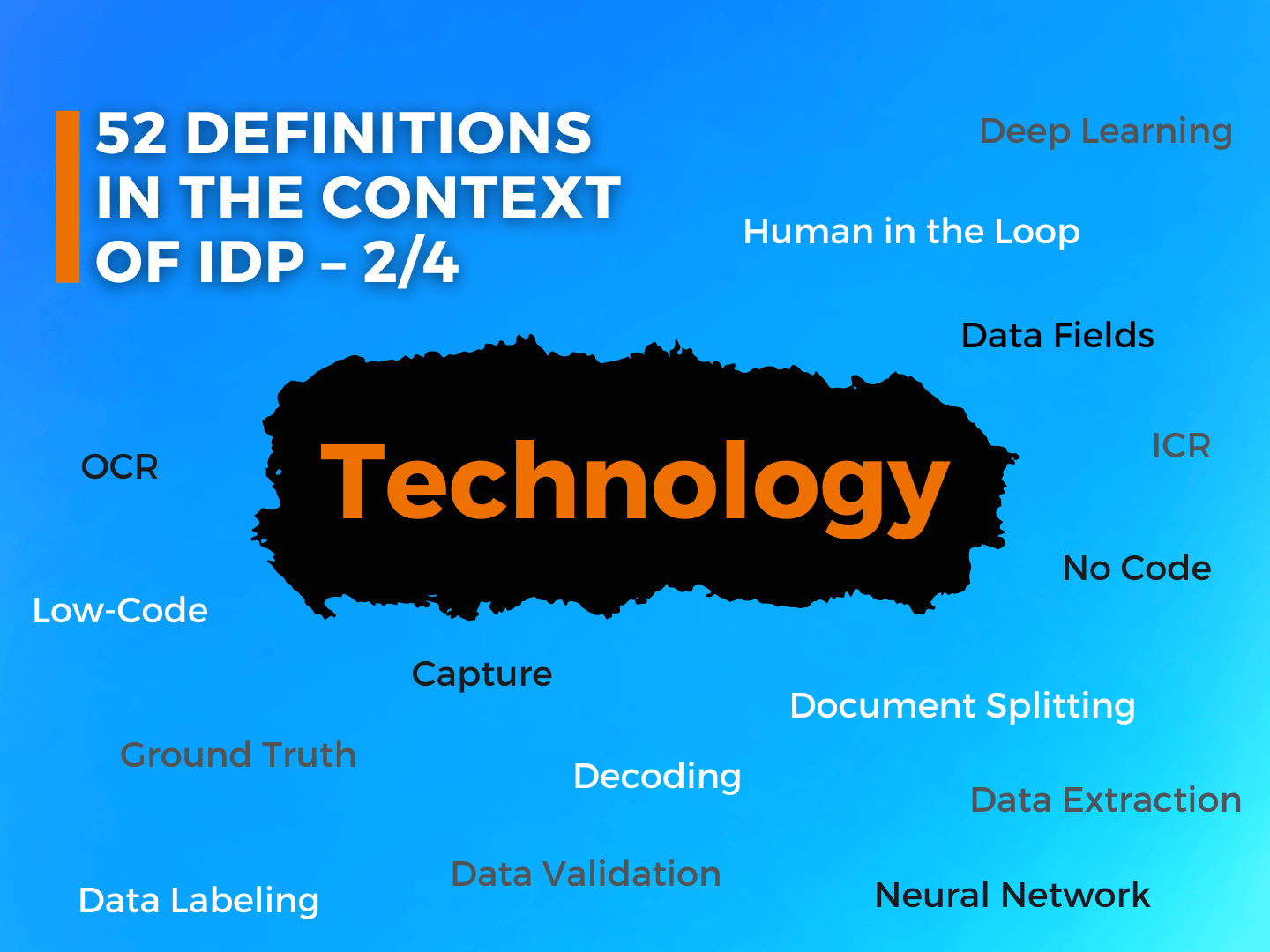
Welcome to the 2nd part of our 4-part blog series titled “52 Definitions in the IDP Context.”
In Part 2, we dive into the crucial technological aspects that empower Intelligent Document Processing (IDP) systems to revolutionize document processing tasks. Subsequent parts (will) cover other essential aspects such as the metrics (1), deployment (3), and industries (4) associated with IDP. Join us as we explore the fascinating world of IDP technology, uncovering its transformative impact on productivity, data extraction, and business operations. Stay tuned for more insightful articles in this series!
Barcode Recognition
Barcode Recognition identifies barcodes from input files, such as documents and images.
Capture
Capture can be defined as software used to ingest information into business processes, including acquiring, classifying, and converting unstructured and semi-structured information into enhanced usable data. It understands and extracts meaningful, accurate, and usable information from multi-channel input. It can also be seen as the first phase of document processing, which involves recognizing input.
Classification
Classification is the process of categorizing documents and sorting them into pretrained document classes based on layout and content.
Data Augmentation
Data Augmentation is a fully automated process that creates more variance for training and reduces the need for extensive data provision. It is a machine learning technique used to mitigate overfitting when training a machine learning model by training models on slightly modified copies of existing data.
Data Extraction
Data Extraction refers to the process of retrieving data from typically unstructured or poorly structured data sources for further data processing or storage.
Data Fields
Data Fields refer to the key elements extracted from structured documents during automatic data extraction. This term is most commonly used in the context of forms processing or table extraction.
Data Ingestion
Data Ingestion primarily refers to the process of collecting, importing, and loading data from various sources into a storage system or data processing platform. Possible methods include real-time data ingestion and batch ingestion.
Data Labeling
Data Labeling (or Data Annotation) involves the process of adding metadata, attributes, or other annotations to raw data to enhance its usefulness for machine learning tasks. This process encompasses tasks like labeling, object detection, bounding box creation, text categorization, sentiment analysis, or any task where additional information is added to provide more context or structure.
Data Validation
Data Validation is the process of verifying extracted data for multiple accuracy points, including whether the correct data is extracted and if the extracted data itself is accurate. This can occur manually (Human in the Loop) or automatically (against a database or rules).
Deep Learning
Deep Learning is part of the broader family of machine learning methods, based on artificial Neural Networks with representation learning. It enables machines to process large volumes of information and perform more complex tasks.
Document Splitting
Document Splitting often occurs alongside Document Classification. It uses machine learning to divide documents into smaller batches or pages.
Entity Extraction
Entity Extraction (also known as Entity Recognition) is a sub-task of information extraction that locates and classifies named entities in unstructured text into predefined categories, such as a person’s name, ID number, address, organization, etc.
Ground Truth
Ground Truth is information known to be real or true, obtained through direct observation and measurement. In machine learning, it represents the ideal expected result and is generated by labeling data to train AI models.
Human in the Loop (HITL)
In machine learning, HITL refers to humans assisting computers in making correct decisions while building a model. In IDP, HITL describes a human worker intervening in the review process to manually correct and validate results that did not pass straight-through processing.
Key-Value Pair Extraction
A Key-Value pair links two data elements: the key is a unique identifier defining the dataset, and the value is the identified data. Key-Value Pair Extraction identifies and extracts Key-Value pair structures from documents, mainly used in the context of form or table extraction.
Low-Code Platform
Platforms with Low-Code capabilities support visual programming abstractions, such as model-driven, metadata-based programming, and user interface creation. They include a database and are used for rapid application development with simplified software development life cycle tooling.
Model
A (machine learning) Model has been trained to recognize and interpret specific types of patterns. Users train a model with a dataset, providing an algorithm for reasoning and learning from the data.
Neural Network
Neural Networks, also known as Artificial Neural Networks (ANNs) or simulated neural networks (SNNs), form a subset of machine learning and are at the core of deep learning algorithms.
No Code
No Code development tools completely abstract the codebase by providing a visual “what you see is what you get” interface for building an application, covering the data model, business logic, workflows, and the user interface (UI).
Optical Character Recognition (OCR)
OCR is a process that converts printed text into machine-readable text and digitally accessible files. Sub-types include intelligent character recognition (ICR) and intelligent word recognition (IWR), both often used for handwriting recognition.
Redaction
Document Redaction identifies and removes sensitive information from documents.
Signature Detection
Signature Detection is used to locate signatures in documents and extract them as image snippets. It can be combined with Signature Verification.
Signature Verification
Signature Verification uses characteristics of a person’s signature as a biometric technique to authenticate identity. In IDP, image snippets of signatures can be used for validation against a database.
Table Recognition
Table Recognition detects tables in documents and provides results based on the table structure. It can be considered a specialized form of information extraction and can also be part of an OCR/capturing process.

